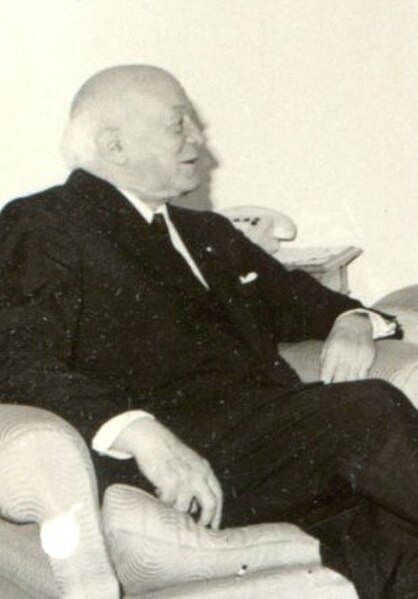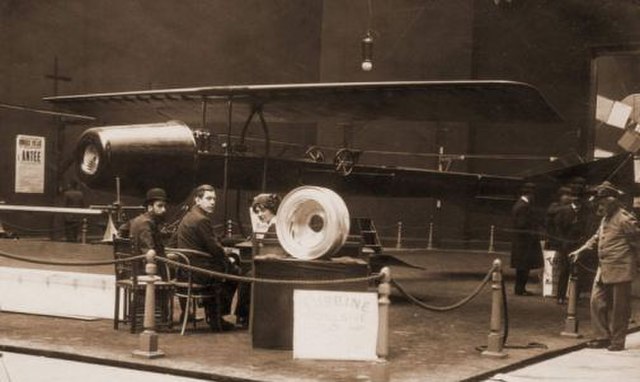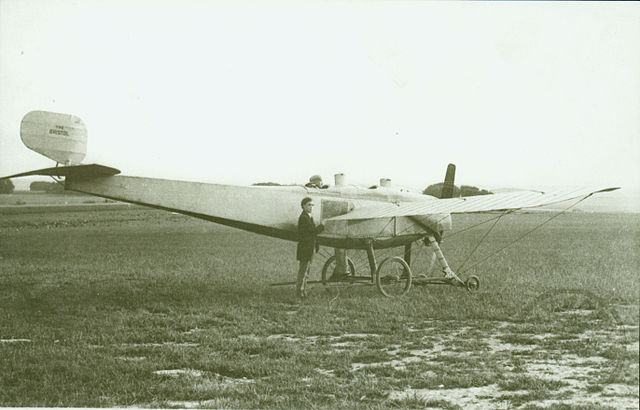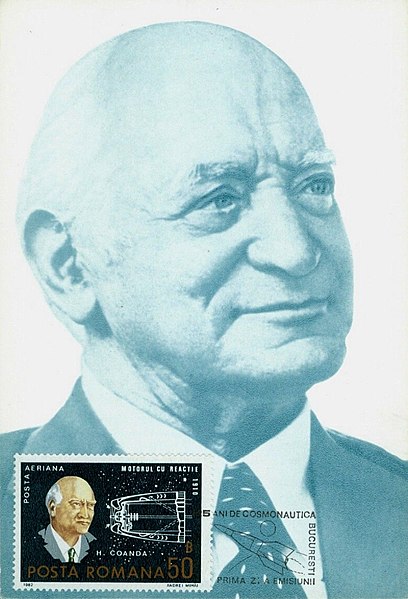The Coandă-1910, designed by Romanian inventor Henri Coandă, was an unconventional sesquiplane aircraft powered by a ducted fan. Called the "turbo-propulseur" by Coandă, its experimental engine consisted of a conventional piston engine driving a multi-bladed centrifugal blower which exhausted into a duct. The unusual aircraft attracted attention at the Second International Aeronautical Exhibition in Paris in October 1910, being the only exhibit without a propeller, but the aircraft was not displayed afterwards, and it fell from public awareness. Coandă used a similar turbo-propulseur to drive a snow sledge, but he did not develop it further for aircraft.
"The Only Aeroplanes Without Propellers". This promotional brochure was available at the Paris salon in 1910.
An overhead view, showing the Clerget engine's four upright cylinders aft of the rotary compressor. Upper and lower wings are mounted on steel tubes extending from the fuselage. A man stands in the fuselage near two Antoinette VII-style trim and steering wheels.
Frontal view photograph. The horizontal stabiliser obscures the lower part of the X-shaped empennage. A second turbo-propulseur is displayed on a stand at the right.
The 1910 Coandă engine design was also used on a sledge designed for Grand Duke Cyril of Russia.
Henri Marie Coandă was a Romanian inventor, aerodynamics pioneer, and builder of an experimental aircraft, the Coandă-1910, which never flew. He invented a great number of devices, designed a "flying saucer" and discovered the Coandă effect of fluid dynamics.
Coandă at a meeting with Nicolae Ceaușescu in 1967
Coandă-1910 airplane with the turbo-propulseur on separate display
1912 Bristol-Coanda monoplane
A 1982 stamp and postcard of Romania dedicated to Coandă








